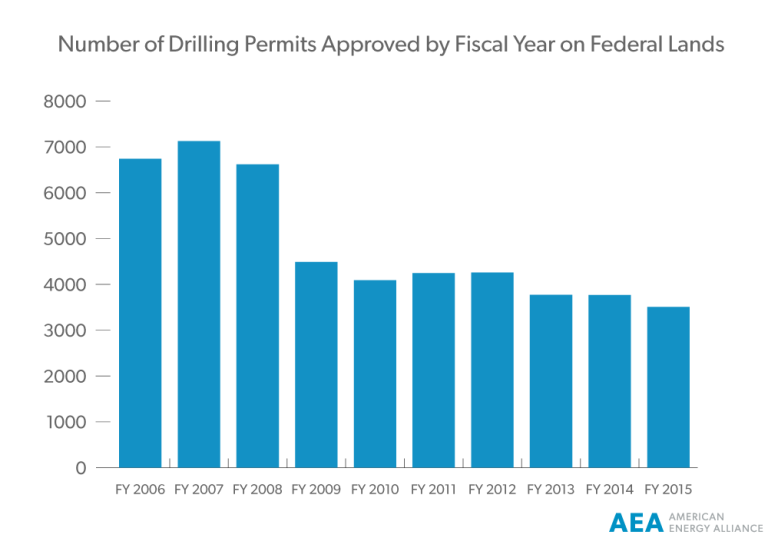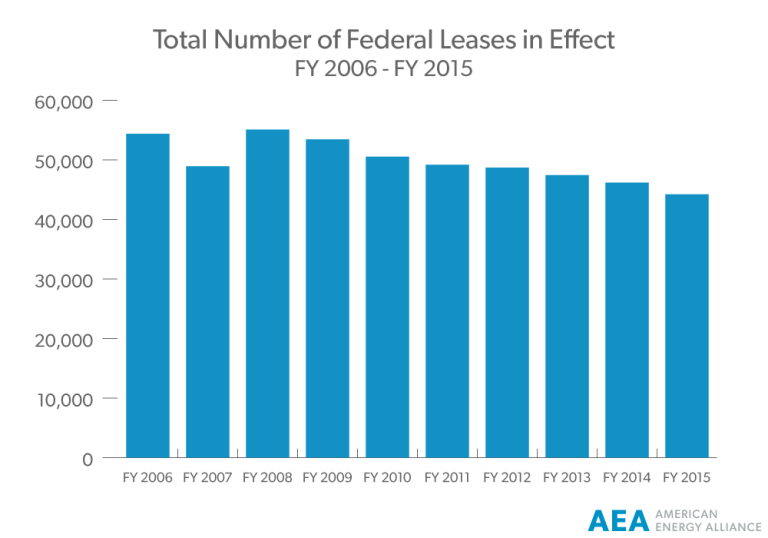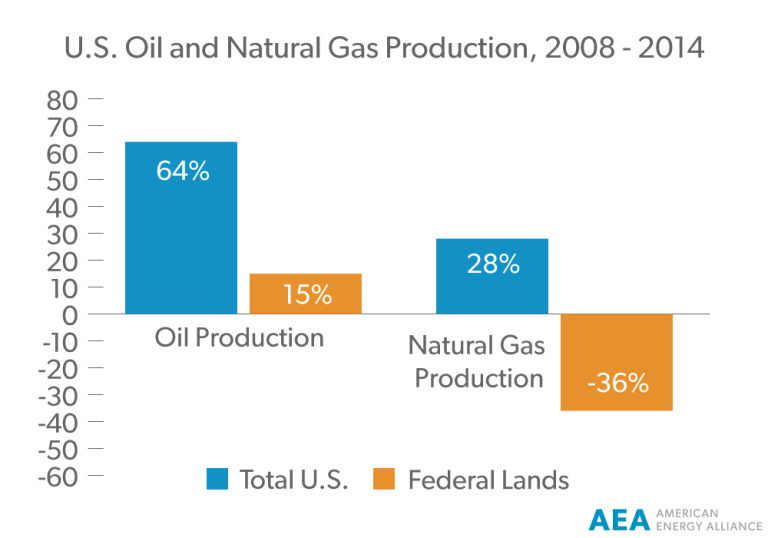Bureau of Land Management Spins a Terrible Record on Oil and Gas
The Bureau of Land Management (BLM) of the Department of Interior tried this week to put a positive spin on their anemic onshore oil and gas leasing program. Even worse, it took them nearly six months to do it, since the fiscal year 2015 ended at the beginning of last October. Of course, it takes a while to craft a message by massaging numbers and cherry picking data points.
In their release, the BLM cites a 10 percent increase in oil production on federal and Indian lands from 2014 to 2015. What they don’t tell us, but the Congressional Research Service thankfully does, is that under the Obama Administration, the “federal share of total U.S. crude oil production fell from its peak at 36.4 percent in FY2010 to 21 percent in FY2015.” The BLM also does not say that Applications for Permit to Drill on federal lands have fallen by 46 percent since FY2008.[1]
The Bureau of Land Management manages 700 million acres of federal mineral subsurface in the United States, equal to over a third of the landmass. BLM’s sister Department of Interior offshore management agency, the Bureau of Ocean Energy Management, manages some 1.7 billion acres of lands offshore, for a combined total of over 2.4 billion acres. Total oil and gas federal leasing acreage is a minute fraction of the total federal acreage, and has direct consequences upon the amount of oil and gas produced from the federal estate as a percentage of the national total.
In addition, leasing on federal lands dropped significantly in the last year, as more and more federal regulations mean less and less interest from businesses interested in pursuing energy exploration and development.[2] It is well understood by businesses that federal lands are the last place they wish to go, given increasing red tape, paperwork, and delays due to an anti-energy executive branch of the government.
The BLM also stopped leasing coal from federal lands last year, in order to “study” the entire coal leasing program. Federal lands, especially in the Western public land states, hold huge reserves of coal which will be needed in the future to keep the lights on in America. The Obama Administration’s “keep it in the ground” policies will impact oil, gas and coal production on federal lands for years to come.
Throughout his time in office, President Obama has actively blocked energy production on public lands and waters and has worked to make energy production on private lands more expensive.[3] Despite the boom in oil and natural gas on private lands, production on public lands is struggling. Total U.S. oil production increased by 64 percent from 2008 to 2014,[4] but only 15 percent on federal lands. Federal lands contain vast conventional oil and gas resources. When oil prices are high, as they have been for almost the entire period of 2008 through 2014, there is no reason that federal production should lag behind production on private and state lands – unless the federal government is antagonistic to energy production. We see more of this with natural gas production. Natural gas production on federal lands[5] fell by 36 percent over the same time period, while increasing by 28 percent overall.
The facts are, despite the BLM’s spin, that the agency is simply following orders from the top, with President Obama’s war on affordable, reliable energy paying dividends to those who would rather keep it in the ground than develop our nation’s enormous resources. All the spin in the world can’t change the fact that businesses would rather not do business with their federal government, and will do whatever they can to avoid leasing federal lands, and producing oil and gas from those lands.
[1] Bureau of Land Management, Oil & Gas Statistics, Table 8, http://www.blm.gov/style/medialib/blm/wo/MINERALS__REALTY__AND_RESOURCE_PROTECTION_/energy/oil___gas_statistics/data_sets.Par.36062.File.dat/number%20of%20APDs%20approved%20Federal.xlsx
[2] Bureau of Land Management, Oil & Gas Statistics, Table 2, http://www.blm.gov/style/medialib/blm/wo/MINERALS__REALTY__AND_RESOURCE_PROTECTION_/energy/oil___gas_statistics/data_sets.Par.11329.File.dat/number%20of%20leases%20in%20effect.xlsx
[3] Institute for Energy Research, Obama’s Roadmap for Expensive Energy, Sept. 10, 2014, http://instituteforenergyresearch.org/analysis/obamas-roadmap-expensive-energy/
[4] Energy Information Administration, International Energy Statistics, Petroleum Production, https://www.eia.gov/cfapps/ipdbproject/iedindex3.cfm?tid=5&pid=53&aid=1&cid=regions&syid=2008&eyid=2015&unit=TBPD
[5] Energy Information Administration, Sales of Fossil Fuels Produced from Federal and Indian Lands, FY 2003 through FY 2014, July 2015, http://www.eia.gov/analysis/requests/federallands/pdf/eia-federallandsales.pdf




Speak Your Mind